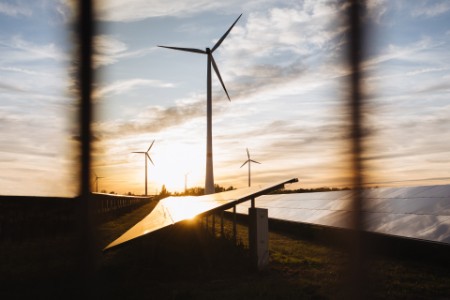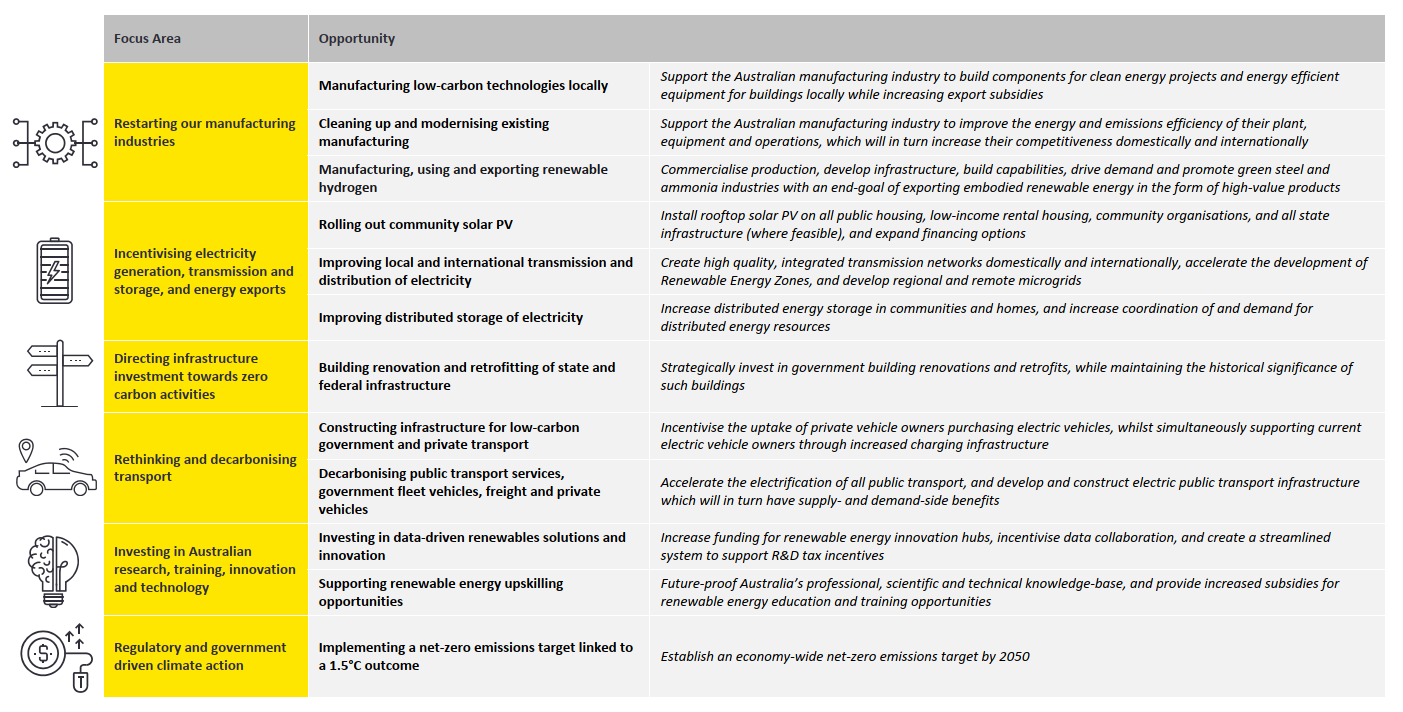Policy first?
Net Zero 2050 has become a policy mantra – some aspirational, some legislated – for every Australian state and territory, as well as the New Zealand government. The UK enshrined the target in law a year ago. The Biden Administration has committed to the US reaching net zero no later than 2050 and has also said it will “lead efforts to get every major country to ramp up the ambition of their domestic climate targets.”
China, currently responsible for around 28% of the world's carbon emissions, is also on path to net zero emissions, albeit by 2060. As noted by the EY Global Power and Utilities leaders, the two superpowers recently announced that they are committed to working together, and with other countries and regions, to tackle climate change.
With Net Zero 2050 a target also backed by business groups, investors and individual companies, it is clear that net zero developments are now part of global market developments. “Accelerated policy in the EU and potentially under a Biden administration will also create something of a green arms race,” says Mathew Nelson, EY Global Leader for Climate Change and Sustainability Services. “Creating the environment to transition our own infrastructure will create opportunities for Australian businesses overseas as well as here.”
The most recent edition of the EY Renewable Energy Country Attractiveness Index (RECAI), highlights how governments must deliver on spending promises for the energy transition. With Australia slipping from being ranked the third most attractive country in the world to sixth, we need to ensure that we remain a competitive environment for global investment. Especially if we are to gain the economic and infrastructure uplift from the approximately USD4 trillion in annual clean energy investment worldwide, a tripling by 2030, that the IEA estimates will be needed to reach Net Zero 2050 targets.
John Connor, CEO of the Carbon Market Institute, believes that “like everything in the climate sector, the core infrastructure is a policy structure.” As the independent industry association for businesses looking to capitalise on the new opportunities from decarbonisation, Connor says its members are frustrated by not being able to change faster or more comprehensively. “We need the policy frameworks to have a long-term driver for investment in natural and physical infrastructure.”
Across the country, state governments have started setting strong policy platforms to lure more investment into decarbonised projects. The experience of the Central West-Orana renewable energy zone (REZ) is an example of how policy action creates opportunity. In May 2020, the NSW government set up the first REZ in Australia asking for expressions of interest in renewable projects greater than 3GW. The policy lure was co-located energy generation assets linked by bespoke transmission assets. A month later, they had received 113 expressions of interest with the projects totalling 21GW and a combined value of $38 billion.
According to ARENA, construction of the Central-West Orana REZ is due to begin at the end of 2022, with the NSW Government already committing $9 million to the project. They have also announced a “further $31.2 million in funding alongside ARENA and TransGrid, including the establishment of a body to oversee the development of the new zone.”
REZs are a key way to improve the sustainability of the electricity industry, while ensuring reliability is maintained and consumer prices are minimised. Successful REZs will support the industry’s transformation. But delivering this outcome is a substantial and complex undertaking. It involves finding an appropriate balance between government facilitation, coordinated planning and support, while creating an environment conducive to large-scale private sector investment in transmission and renewable generation assets.
REZs have since been announced in other NSW locations as well as in Queensland and Victoria, while AEMO, in its 2020 Integrated System Plan (ISP) released in July 2020, identified 35 high-value locations for REZ development for the National Energy Market.
Shane Rattenbury, ACT Attorney-General and Minister for Water, Energy and Emissions Reduction, agrees that policy is a tool for unlocking investment, especially in the energy space. “Funnily enough government doesn’t need to spend money,” says Rattenbury. “Government just needs to set clear policy.”
Absent clear long-term policy, investors are beginning to set out their own expectations. In EY’s recent Institutional Investor survey, 74 per cent reported they would reconsider or move away from an investment due to climate risk alone, a massive uptick from prior years.
In much the same way that investors are acting ahead of policy, Davina Rooney, CEO of the Green Building Council of Australia, sees voluntary tools taken up by industry leaders as the private sector’s means of showing what can work through strong, future-focussed signals for the market. “By using voluntary tools, with as much harmonisation and alignment as possible, the leaders in a space such as property or manufacturing or finance can show that it’s safe for government to bring in regulation and procurement frameworks behind those tools.”
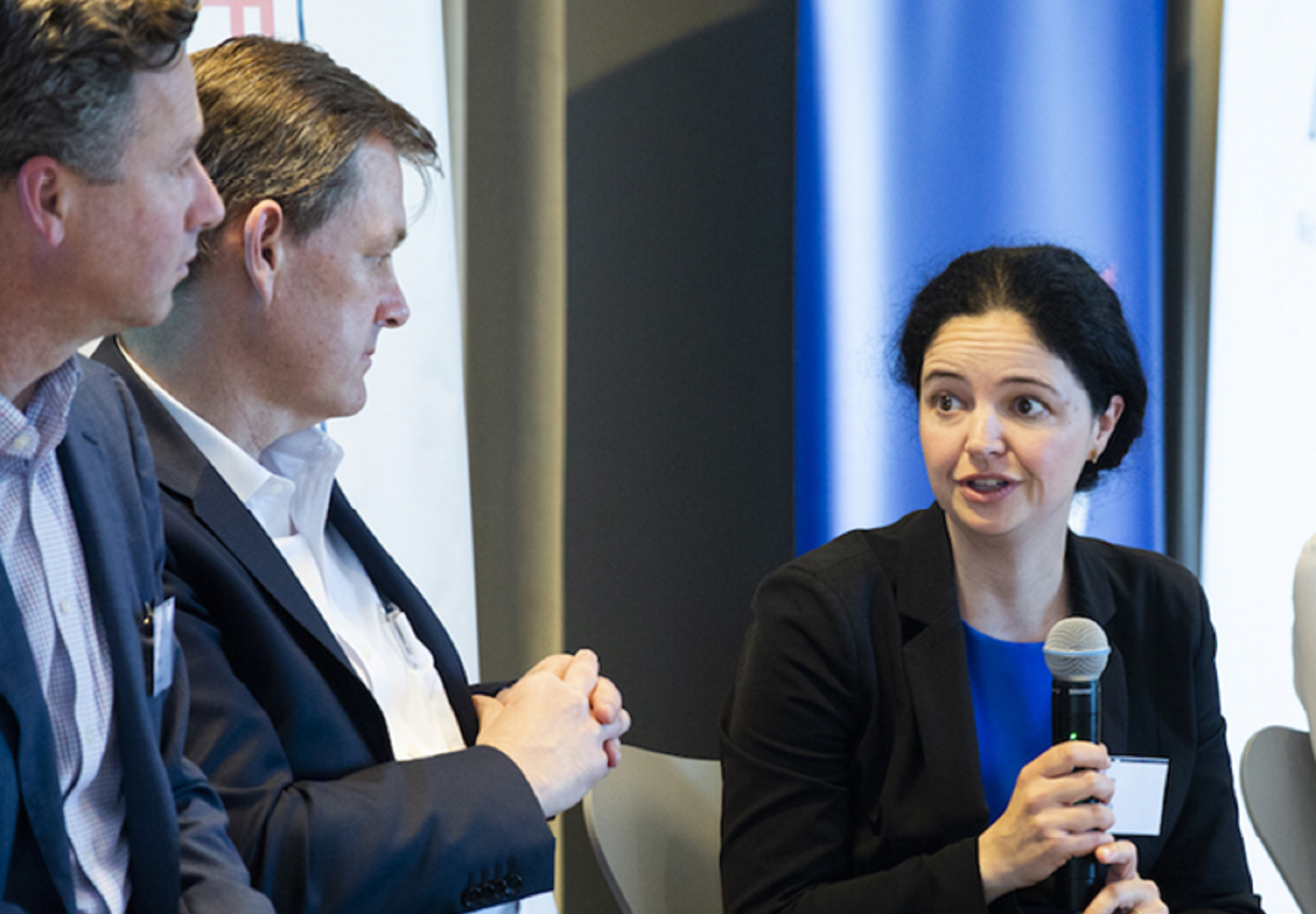
Davina Rooney, CEO, Green Building Council Australia
“In 2016, for example, we started the carbon positive road map. As well as sending signals of what we’re going to do tomorrow, we started sending long-term signals to give industry and the supply chain certainty. A friend of mine talks about ‘the carrot, the stick and the tambourine’. The tambourine is anyone that makes noise and draws everyone’s eyes in, which in our case is the leaders’ cohort committing to net zero 2030 in their existing buildings. The carbon positive roadmap is the carrot, setting owners, developers, tenant and leaseholders up for regulation, selling what the pathways look like. Then, when we’d shown what was possible in the voluntary tools, NABERS was mandated, which became the stick.”
Selina Short, Managing Partner for EY Oceania Real Estate and Construction says that while Australia’s property industry has been “ahead of the curve” in driving down emissions, there are sizeable opportunities to decarbonise business models and value chains. EY’s 2020 Megatrends Report points to carbon removal solutions like cost-competitive renewables, microgrids, decentralised energy and “the electrification of everything” as ways that real estate leaders can take advantage of the convergence of energy and property.
“With buildings being responsible for almost a quarter of Australia’s carbon emissions, technology that improves the energy efficiency of our buildings delivers obvious dividends,” says Short. “Rapid transformation in the office and residential space, driven by technology, changing consumer demands, and a rethink post COVID, means that future masterplanning will need to integrate the built environment and infrastructure in a way that increases resiliency to pending climate threats, while simultaneously reducing their own impacts on the environment.”
Using digital twins – an exact digital replica of a physical asset – will help bridge the gap between the real and virtual worlds, providing insights into the most energy efficient designs and continual optimisation through real time data, says Short. “When you can analyse lighting, heating and cooling, and make adjustments in real time, you reduce energy consumption,” says Short. “Many asset owners are embracing digital twins and automation to drive down emissions at the individual building level. But it’s at the city level where digital doppelgängers get really exciting – using data analytics, algorithms, artificial intelligence and machine learning to help uncover anomalies or spikes across a city and then take the action we need to meet our ambitious Paris targets.”
Investment risk
74%Percentage of investors who would reconsider or move away from an investment due to climate risk alone; Source: EY 2020 Institutional Investor survey
Transmission control
If Net Zero 2050 is the goal, transforming energy generation and delivery is essential – the electricity market currently contributes around a third of Australia’s greenhouse gas (GHG) emissions. Accelerating spending and smart policy choices on transmission infrastructure, while undoubtedly complicated, does two key things: it unlocks our vast, abundant and affordable renewable energy resources, and it helps lower the cost of electricity for customers, making the cost of doing business in Australia more internationally competitive.
“Investment in transmission infrastructure and energy storage is on the critical path to the continued growth and attractiveness of renewable energy generation,” says Igor Sadimenko, EY Oceania Power and Utilities Leader. “Our transmission network was designed to transport electrons that are primarily generated by base coal-fired power stations. With the significant growth of large-scale renewables generation and household solar installations, there is a need to augment and reform the transmission system to support the connection capacity requirements and efficiently manage future congestion issues.
“The Australian Energy Market Operator’s (AEMO) 2020 Integrated Systems Plan has identified several transmission infrastructure projects that are key to maintaining the stability of the overall system and continuing building confidence in the private sector investment for renewables generation.”
A report from June 2020 noted that Australia had over 160GWs of grid-scale renewables in the development pipeline, though system constraints mean many of these will not get full approval. In all but the Slow Change scenario of AEMO’s ISP, this represents more than the 26GW that AEMO forecasts will be necessary to offset the retirement of 15GW of “coal-fired generation that will reach the end of its technical life and so likely retire by 2040.”
AEMO makes explicit note that we need both investment and rule-based changes to bring optimal change into the energy market. “[The 2020 ISP] identified the least system cost investments needed for Australia’s future energy system. These are distributed energy resources and variable renewable energy, supporting dispatchable resources and power system services. Significant market and regulatory reforms will be needed to bring the right resources into the system in a timely fashion,” says the report.
It’s a view backed up by many in the industry. “You need transmission upgrades and you need regulatory reform,” says Nicky Ison, WWF Energy Transition Manager. “We need funding to unlock the transmission upgrades. On the renewable deployment side, a mixture of renewable energy zones, reverse auctions, supporting corporate PPAs and an adaption and upgrade of the renewable target would be a really simple way of doing it.”
From the NSW experience of oversubscribed renewable opportunities, to South Australia’s Hornsdale battery project that has, to date, delivered $150 million in savings for South Australian energy consumers, as well as creating 158 jobs and more than $300 million in economic benefits for the state, the intelligent interplay of policy and regulatory reform has proven that private money will come, even without public stimulus. CEP Energy is planning to instal a 1.2GW battery, the world’s largest battery, in Kurri Kurri, north west of Newcastle.
Meanwhile, Neoen, the French renewable energy developer, is proposing a $3 billion solar, battery and wind project in South Australia, which includes battery storage, that when fully rolled out would be ten times larger than Hornsdale. Crucially, however, the full plans rely on the Australian Energy Regulator finalising regulatory approval for the Project EnergyConnect interconnector between NSW and South Australia.
This interdependence of future investment in renewables and the grid is made clear in the AEMO 2020 ISP. “Strategically placed interconnectors and REZs, coupled with energy storage, will be the most cost-effective way to add capacity and balance variable resources across the whole NEM,” notes AEMO. “Without adequate investment in transmission infrastructure, new [renewables] will be struggling to connect. This could in turn lead to the private sector under-investing in the new generation capacity needed ahead of the planned or unplanned retirement of existing generators.”
Paul Orton, Head of Project and Export Finance, Institutional Banking at ANZ, says that while there’s a sizeable amount of investment available from institutional investors, those funds and banks and providers of large-scale capital need to see a coherent value chain.
“There’s still a huge pipeline of large-scale investment in renewable energy projects, let alone what’s happening on the rooftops and now behind the meter,” he says. “But the transmission network is still an area of constraint. For me, that would be a starting point for investment in a decarbonised economy. If we don’t get that worked out in the next three to four years, there will be a slow-down in the number of projects.
“People are simply not going to invest unless they understand the connection capacity. Some investors and even some lenders are willing to have certain amounts of merchant risk in their structures but they need a reasonable level of certainty that the forecast or assumed generation is going to be able to be dispatched. At the moment they may not have that certainty.”
Renewable energy
$3 billionSize of South Australian solar, battery and wind project proposed by French developer, Neoen
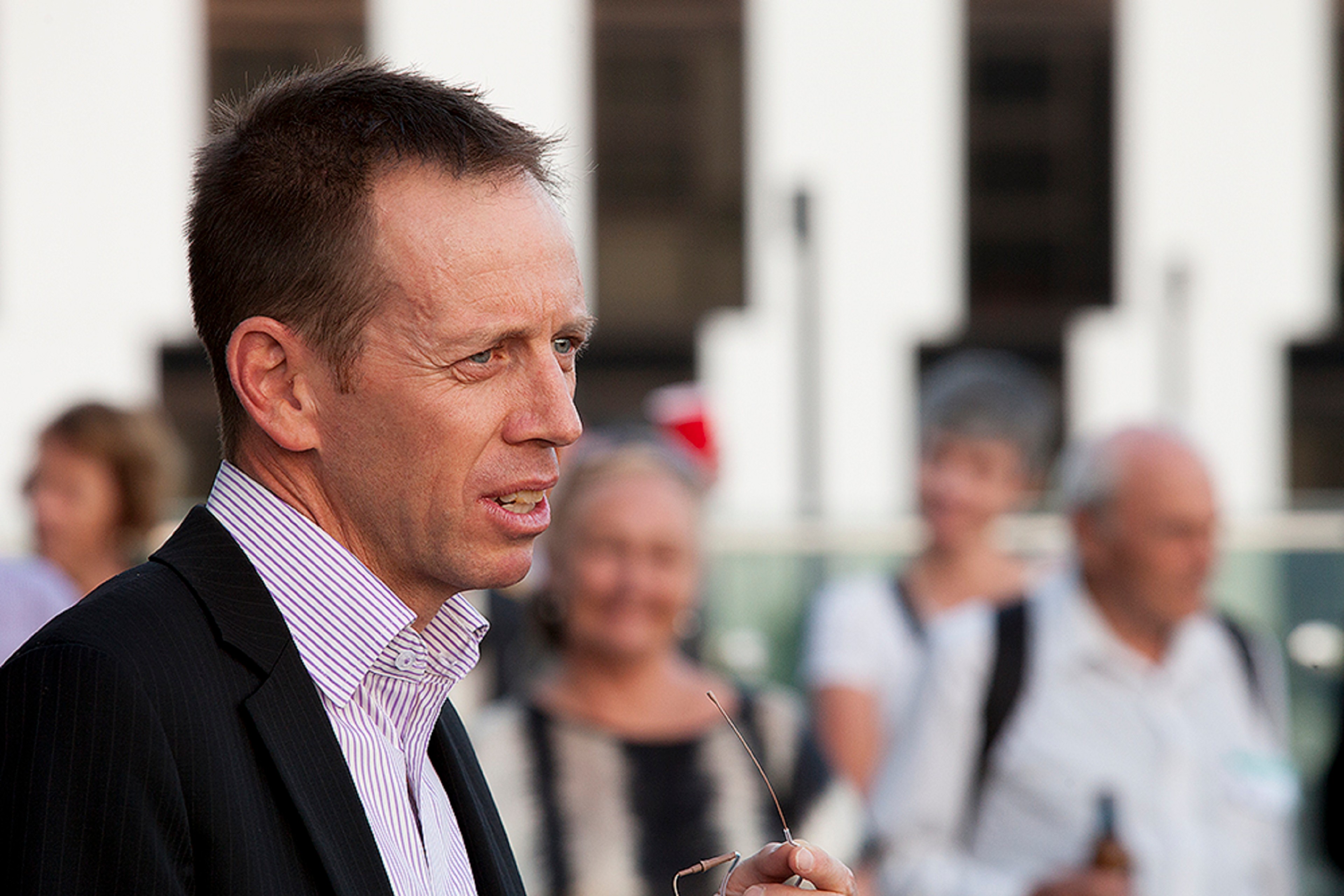
Shane Rattenbury, ACT Attorney-General and Minister for Water, Energy and Emissions Reduction
The potential for cheaper domestic energy, via greater quantities of renewables won’t happen without improving the transmission network, from local retail network and household connections right through to high-voltage transmission lines and the state-to-state interconnectors. Investment in significant upgrades to the network will also open up the ability to collect and carry energy for export markets, a new sector that would add money and jobs to Australia’s longer-term growth.
But increasing the quantity of renewables in the grid will lead to redundancy issues – too much energy with nowhere to go. It’s an issue seen by some as a serious enough issue to block any complete move away from thermal power just yet. However, excess renewables should instead be viewed as an opportunity to value-add across industries and in to global markets.
As Ross Garnaut, among others, argues, Australia can be a renewable energy exporter to power-hungry South East Asian countries. If Australia exceeds 100 per cent renewable electricity generation, there are opportunities to send excess capacity to nations such as Indonesia, Singapore and Malaysia.
The Sun Cable consortium, for example, is investing in a 10GW solar farm in the Northern Territory linked with battery storage to send electricity to Singapore, providing up to a third of that nation’s needs. But clarity on what role grid-scale renewables can play in both the domestic market as well as the international system, is still needed.
“Saying the goal is net zero and we’ll do some renewables to get there undersells the role that Australia can play globally in a clean energy and zero carbon future,” WWF’s Ison says. “It’s not just about decarbonising Australia, it’s about helping our neighbours and the world to decarbonise as well, and reap the economic opportunities and jobs from doing so.”
“We’re talking about using renewables to reindustrialise Australia in centres like Newcastle, Gladstone, Bell Bay in Tasmania, Kwinana in Western Australia. We have some of the most expensive power prices in the world but in a world that acts on climate change we will have some of the cheapest power prices in the world. These industrial places will be the powerhouse of a global renewable revolution, but only if we act now.”
Already excess renewable capacity is being slated to fuel the production of green steel and hydrogen. As a review completed by Australia’s Chief Scientist Alan Finkel found, producing hydrogen using renewables, and exporting it has the potential for huge returns on investment. Once hydrogen vehicles arrive, especially in heavy vehicle transportation and for industrial uses, the tipping points will be even more compelling.
EY estimates that economic tipping point for green-hydrogen could arrive as soon as 2023. According to Matt Rennie, EY strategic alliance partner, there is no doubt that the economics of hydrogen are improving, through a combination of government subsidies, technology-driven cost reductions and development of supply chains.
Certainly, the combination we are now seeing of improving economics and favourable policy should have Australia’s hydrogen economy fully open for business by 2025. As a means of kickstarting our industrial industries again, fuelling, quite literally, a new industrial export market, the argument for network improvement and acceleration of renewables into the grid is compelling.
Related article
Putting our cars and buildings to good use
While the supply-side is crucial to our future energy needs, the ability to control the demand for electricity is just as important. By changing the demand curve, a large portion of anticipated grid transformation costs can be avoided. Instead of upgrading an entire network to deal with summer afternoon peaks when all the air-conditioners go on, it might just be easier, and cheaper, to reduce the load in the first place.
It’s on the demand side that a complex interplay of policy, infrastructure and investment resides. The deep retrofitting of buildings, both commercial and residential, has the capacity to reduce energy demands. EY modelling shows that with stronger energy efficiency policy settings and solar energy eligible under financial incentive schemes, total commercial sector building emissions could fall by more than 34 per cent by 2030, and by more than 97 per cent by 2050, with significant net economic benefits.
Expanding electric vehicle uptake, and introducing bidirectional batteries that both take energy from the grid but can also put energy back into it, will work alongside connected smart grids to provide storage options and manage loads that some countries estimate will save them billions in network upgrades. Countless studies have shown this value of EVs to the demand curve, particularly in helping to flatten the afternoon and evening peaks caused by residential electricity usage. A recent study of California’s network found that even with conservative assumptions, EVs with smart charging saved somewhere in the order of USD120-690 million in grid operating costs.
According to Rennie, by the end of 2021 Australian households generating their own power using solar and battery storage will reach long-term cost parity with households using energy from the grid. “This is a critically important milestone because it provides the cross over point at which a household can make and store their own power, and feed that power back into the grid for others to use or buy,” he says.
Already, organisations such as PowerLedger are providing platforms for individuals to trade their own generated electricity with other individual buyers using blockchain technology. It’s also where Virtual Power Plants and micro-grids will prove useful in helping change behaviour and expectations of retail energy buyers.
“The second tipping point is in 2024,” says Rennie, “when the long-term energy cost of combustion vehicles crosses over EVs. The associated uptick in sale of EVs will enable EV batteries to become a serious element in grid stabilisation and energy supply.”
By the end of 2021, Australian households generating their own power using solar and battery storage will reach long-term cost parity with households using energy from the grid.
Infrastructure Victoria Deputy Chief Executive and Chief Operating Officer Jonathan Spear, agrees that the infrastructure for transmission and generation will converge with the move towards more electric vehicles. He also nods to the need for regulation to drive both private and public investment. “We know the uptake of electric vehicles is based on price parity but the countries that have seen increases in electric vehicles have had a range of carrots and sticks,” says Spear. “One of the important ones is emissions standards that have become increasingly strict.”
Despite around 80 per cent of the world having fuel efficiency (CO₂ emission) standards, Australia still does not have a legislated standards, meaning both our fuel usage and our emissions are higher than they could be under a stricter regulatory regime.
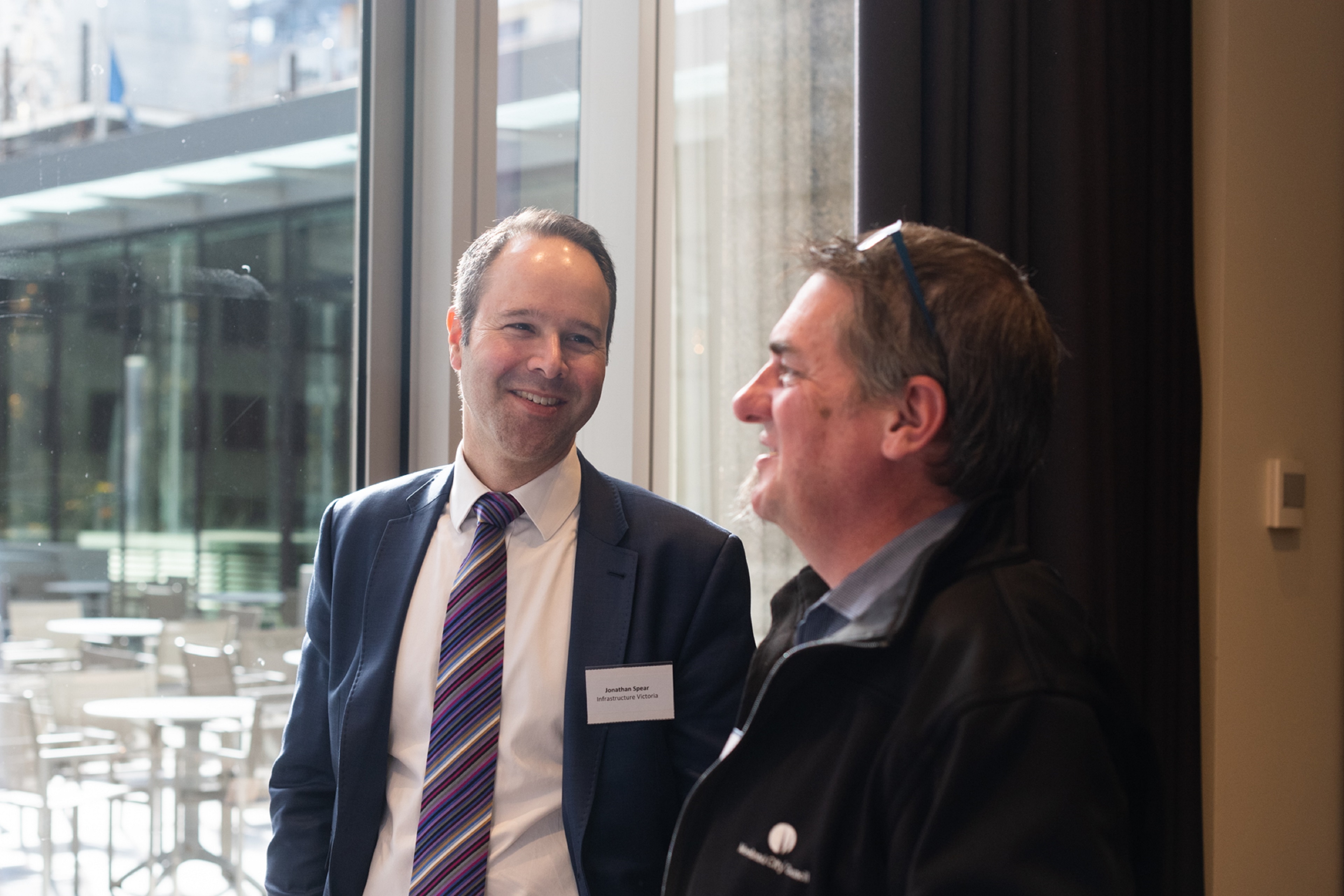
Johnathan Spear (left), Infrastructure Victoria Deputy Chief Executive and Chief Operating Officer
A 2016 report by the Federal Department of Infrastructure and Regional Development found that “the most efficient variants of top selling passenger vehicle models offered in Australia … were about 27 per cent worse on average than the most efficient model variants offered in the UK.” “[Emissions standards] are something that would assist in the transformation towards either zero or very low emissions,” Spear says.
Rethinking real estate
The deep retro-fitting of Australia's buildings, both public and private is another clear avenue of post-pandemic infrastructure investment. Buildings account for 23 per cent of the country’s GHG emissions. And while energy efficiency is the less sparkly part of decarbonisation, it is perhaps the most highly-effective in terms of cost, quality of life improvements and job creation.
Investing in the decarbonisation of buildings is something that Australian governments have already committed to. COAG has an agreement that the residential building codes will go towards net zero energy by 2030. Likewise, an EY report for COAG has set in train similar trajectories for commercial buildings, that account for over 10 per cent of Australia’s greenhouse gas emissions. Our report identified six priority policy options that together would result in a net present value of $8.4 billion and an average Benefit-Cost ratio of 2.5.
If the pathway to net zero in the building space is efficient buildings run on renewables, minimum standards will be absolutely necessary to actually hit that efficiency. As companies start to invest, another piece in the energy market puzzle needs to shift: a simple pathway for utilising those renewables. “There’s quite a lot complexity at the moment in the energy market about when you can and can’t use renewables in the grid,” says Rooney, speaking from her Green Building Council of Australia office in Sydney. “That pathway needs to be substantially simpler.”
For residential housing, overcoming the problems of split incentives in low-carbon building is a key barrier to increasing demand. In simple terms: the person who pays up front ie the builder or developer, is more often than not the person who ultimately saves ie the owner. While a builder or developer might accept that installing energy efficiency measures is a logical thing to do, they also know that the consumer doesn’t always understand why they’re paying more for the builder to recoup their costs.
Home buyers might understand a new granite benchtop or an extra sunroom at the back but they don’t understand energy efficiency. The rise of solar and battery technology is a chance for the market to cut through the ambiguity and reduce energy bills to nothing. “People understand a house with no bills a lot easier than they understand ‘less bills’. Zero is a lot sexier than 10 per cent, 20 per cent or 50 per cent less on your power bills. Zero is definitive and saleable in a way that ‘less’ isn’t,” says Rooney.
In addition to pushing for standards that are net zero, comfortable and resilient, the GBCA is bringing zero bills together with partners seeking to deliver innovative finance options. They are partnering with some of the biggest volume builders as well as more innovative building companies, to offer a voluntary consumer differentiated standard housing coupled with a “green mortgage” with interest costs contingent on energy efficiency. “From this we can collect the data that shows how you get from today to net zero housing in the future, from how much it costs to what that business case looks like at scale.”
Procurement underpins resilient infrastructure
Scaling from niche markets to large, nation-wide approaches is crucial to how well and quickly decarbonisation investment can be realised. And within the complex chain of individual cause and effect that creates wholesale change, the government holds one of the most powerful levers: procurement.
In 2018, the ACT set out to make their government passenger vehicle fleet zero emissions. It was to be done within three years, because that is the average fleet lease cycle. Changing the procurement parameters had every major carmaker wanting a piece of the action. Now, the entire fleet is not only carbon neutral it is cost neutral. Running costs on EVs are 80 per cent cheaper which balances out the higher upfront costs.
As a result, the ACT has moved from a three to a four-year lease term. That experience shows how changing procurement rules to favour decarbonised assets and systems, or low emission supplies and suppliers can be cost neutral, and in some cases, save governments and organisations money. With federal government goods and services procurement contracts worth $64.5 billion in 2018-19, this represents a powerful driver for market change. And given federal and state government COVID response stimulus packages are likely to trigger a mini-infrastructure boom, having carbon and emission reduction targets in construction material procurement rules would provide powerful market signals with limited inconvenience for the procuring bodies.
Using recycled material in government-funded infrastructure builds does two things: it reduces the distance materials have to travel, as virgin materials are usually located in central distribution centres whereas recyclables can be procured closer to build sites. It also keeps investment directed locally, for the same reason.
In September 2020, 16 metropolitan Sydney councils set new procurement standards so that 100 million glass containers can be recycled into roadbase, reducing the need for virgin sand being used. The initiative aims to create a market for turning over 20,000 tonnes of containers into crushed glass roadbase a year. According to NSW Environment Minister, Matt Kean, “this is about empowering business and local government through innovative and sustainable initiatives that helps to build essential infrastructure, creating jobs and driving a robust economy.”
Spear agrees. “We think the combination of getting the policy settings right at the front end, the infrastructure supply chain in the middle and then building the end market as well, is one of the key decarbonisation investment opportunities for Victoria,” he says. “Industry needs clarity on standards for recycled product so that they can create markets for the product. If you don’t have clarity of product standards and commitment by both other industry players and governments to purchase recycled product then all you end up doing is collecting material and stockpiling.”
Rooney also believes that drawing clear targets and settings is critically important for investment. “You need to set up the procurement pathways for the property and construction industry,” she says. “That then builds the workflow for that cohort which then builds their business case for better.
“Our call to action is for governments to mandate in their procurement or in their planning of fast track projects higher and clearer sustainability expectations than they ever have,” says Rooney. As part of this, the GBCA last year, in partnership with the Property Council of Australia, launched Every Building Counts, to develop policies that can help drive a low-carbon built environment.
Related article
It’s not easy trying to be green
Moving to a decarbonised world means private companies, listed boards and government departments will have to consider deeply complex scenario planning. While opportunities are immense, modelling future states will be all the more difficult as policies shift and emerging technologies mature. Despite this, what we do know is that Net Zero 2050 doesn’t mean business as usual until 2049.
The carbon curves tell us that not only do we need to get to net zero a lot sooner, the curves become a lot steeper the longer we leave it. If we are to meet our Paris commitments, EY estimates that Australia will need to reduce carbon emissions by 8 per cent every year for the next decade - a reduction that wasn’t even achieved through the COVID-19 lockdowns.
For the Net Zero 2050 target to really mean something, and not become another slogan rendered meaningless by greenwashing, companies and governments must cost the most efficient pathways to Net Zero 2050, put in place targets for 2025, 2030 and 2040, and then meet them. EY has recently committed to being carbon negative in 2021 and net zero in 2025. Setting interim targets does two things: it creates ongoing accountability throughout the decarbonisation journey and checkpoints for short-term consequences if targets aren’t met. In a post-pandemic world, at executive levels of organisations and government, there needs to be a strong commitment to just a small number of things for Net Zero 2050 to be realised.
We believe that focus should be the transformation of the energy market and investment in infrastructure that aligns with the Paris commitments. If these are managed with clear strategy and policy certainty, the first steps towards Net Zero 2050 are a given. More than that, it will be economically stimulating and a way for Australia to stand apart from the pack as we emerge from a straitened pandemic world.
Summary
Future-proofing the Australian economy rests on investments for a decarbonised economy.
